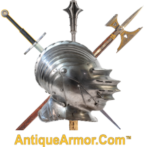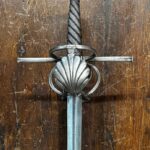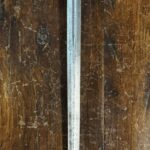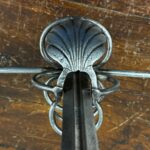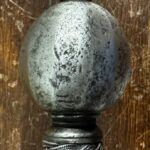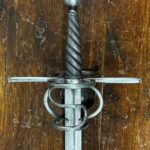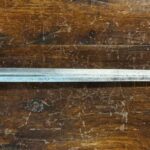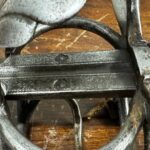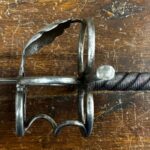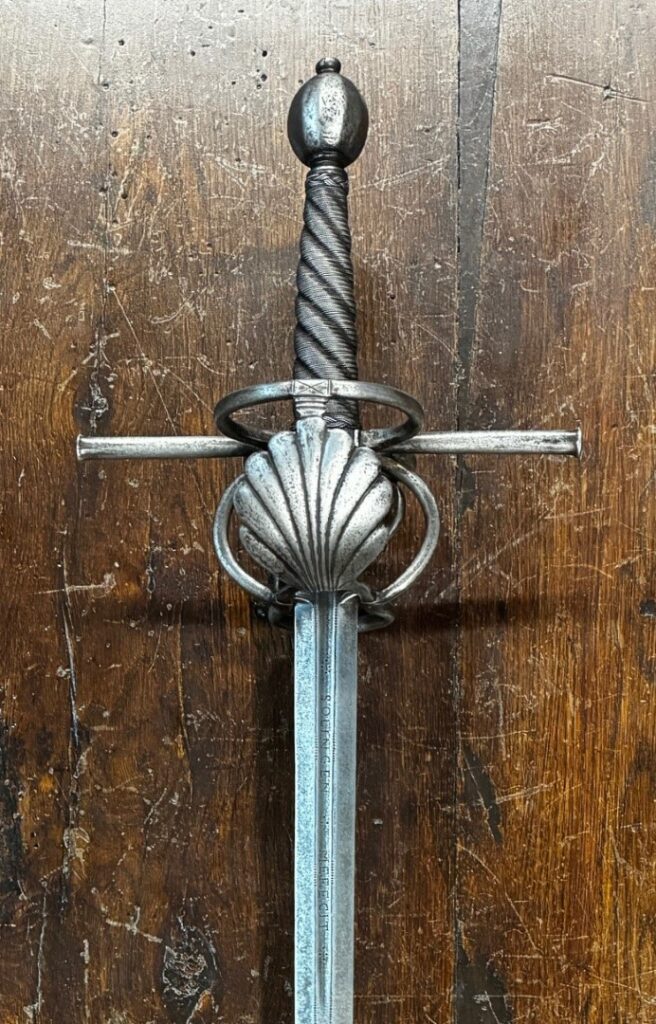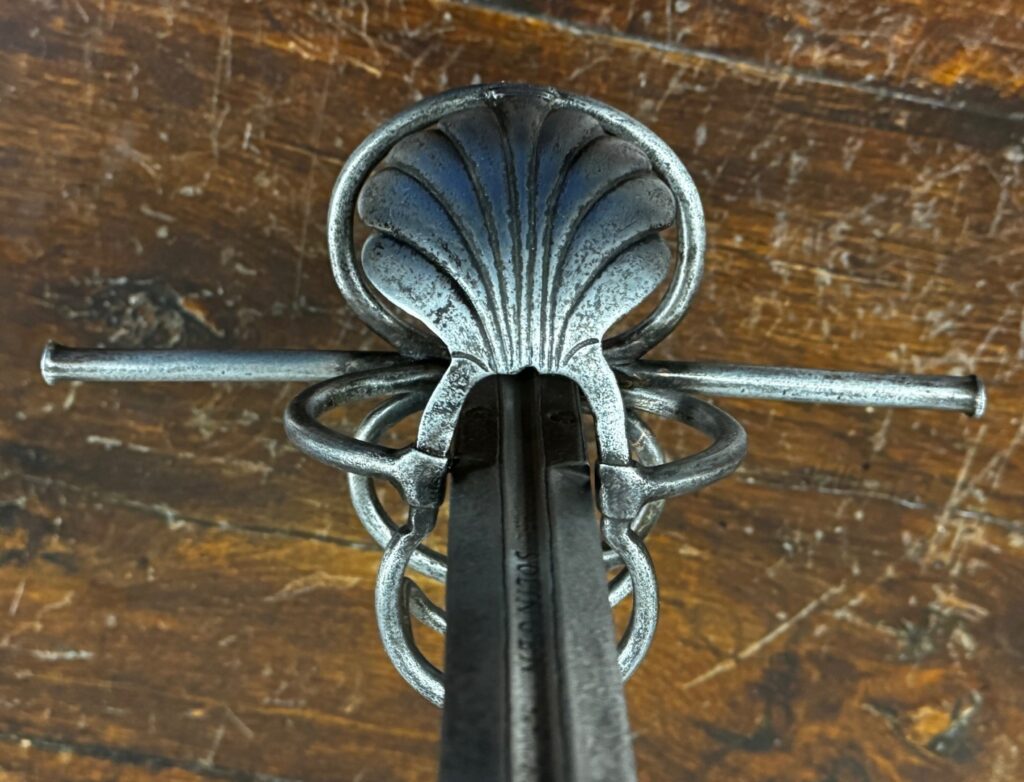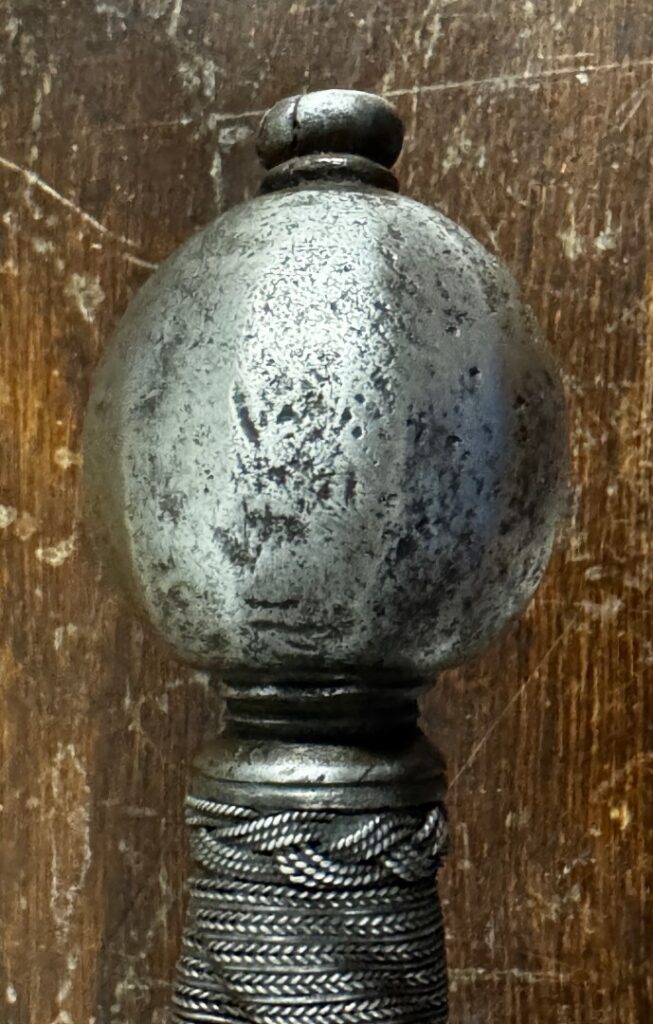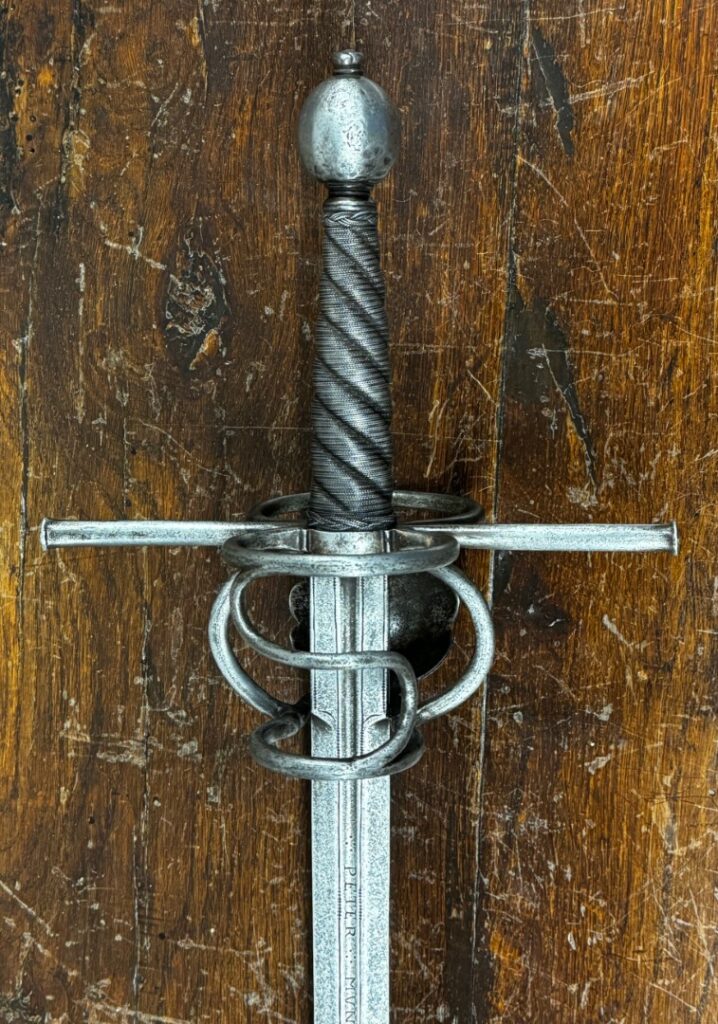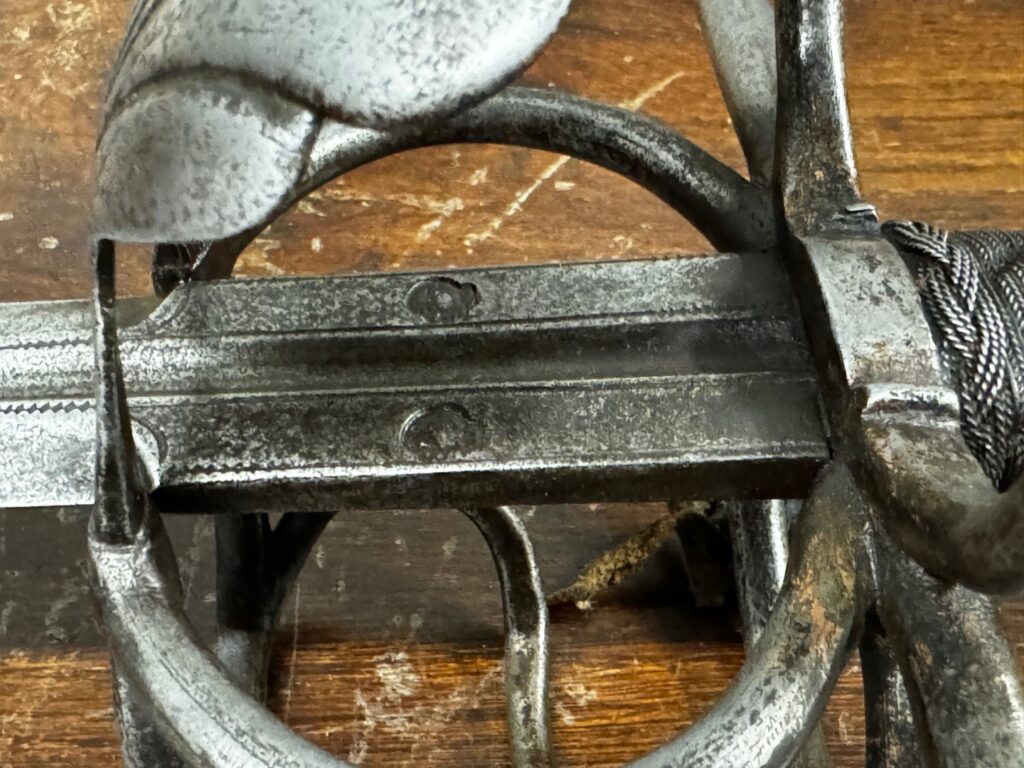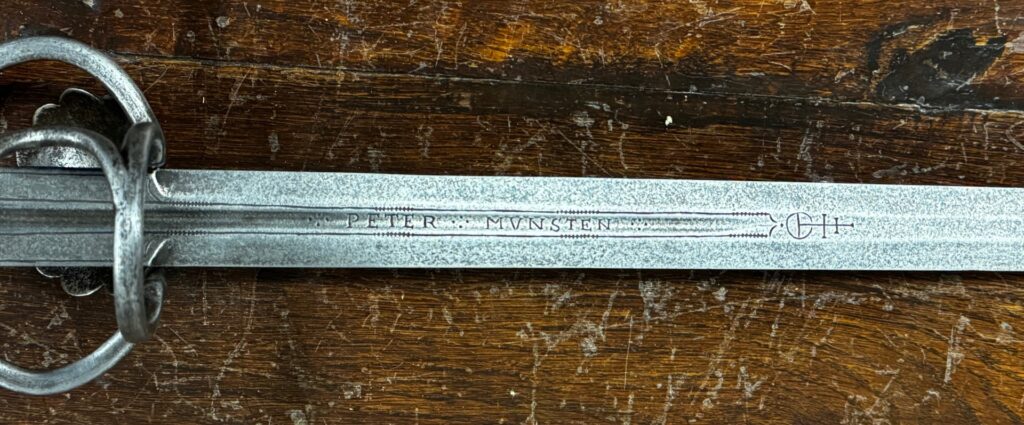1649) EXCEPTIONAL GERMAN BASTARD SWORD BY PETER MUNSTEN CIRCA 1600:
Description: Constructed with a shell-shaped guard, horizontal oblong quadrilateral-shaped quillons with swelling tips, an inner ring guard, a pommel of octagonal spherical shape, a tapering two-sided blade with a fuller extending about 1/3 the length of the blade, with the inscription “SOLINGEN MEFECIT” made in Solingen, on the other side, the inscription “PETER MUNSTEN”, a double crucifix and orb at the inception of the inscriptions, the ricasso and fuller decorated ensuet with lines and punch marks, silver wire grip with Turk’s heads, a ricasso with two ineligible maker’s mark.
Length: approximately 45.5 inches.
Discussion: The bastard sword developed circa 1250, about 75 to 100 years earlier than the two-hand sword (circa 1325). A bastard sword (called hand-and-a-half sword by Victorian collectors, or Anderthalbhander in German) is a combination of a one-hand and two-hand sword. A bastard sword can be wielded like a one-hand or two-hand sword. It cuts and thrusts with a broad or long double-edged blade. Additional power can be employed by using the pommel and the lower area of the hilt below the pommel as a grip for a two-hand strike to increase the impact and penetration.
The term bastard sword was first recorded in France during a duel in the 17th century. In Marc de Vulson‚ 17th-century treatise”Vray Theatre d‚ÄôHonneur” he describes the weapons used in a duel fought before King Henry II of France in 1549 as follows: Deux epees batardes
Bastard swords were widely used in Germany and Switzerland and were most prevalent with the cavalry. Hilts varied throughout their evolution. Until circa 1550, most hilts on German bastard swords were cruciform in shape, with some having S-shaped guards. After circa 1550, some hilts became more elaborate. Because they were knightley weapons, they were used with great frequency from horseback. Sword length during this period varied from approximately 35 to 40 inches. After circa 1250, the length increased to approximately 45 to 55 inches. So why did it take until the early 1300s for the bastard sword to flourish? There are two primary reasons:
1) For the same reason, full-metal defensive armor and two-hand swords did not develop until the same period. As furnaces got bigger in Medieval Europe, steel billets (solid lengths of steel) accordingly increased in size. With bigger steel billets, swords could now be made with fewer (but larger) steel billets, eventually reaching their peak of one billet per sword. Larger furnaces generally meant higher temperatures, better steel, faster production, and probably less expensive to manufacture on a large scale.
2) As armor evolved, its counterpart, the sword, did the same, with larger specialized swords of superior quality and design. This was the weapons race of its day.
Conclusion: All collections should have the iconic bastard sword as a centerpiece. This example is superb, elegant, and highly sought-after. It is priced to sell immediately…..ACT-NOW !!!*
Contact Me To Get The Latest Lowest Price Possible From The Owner*
